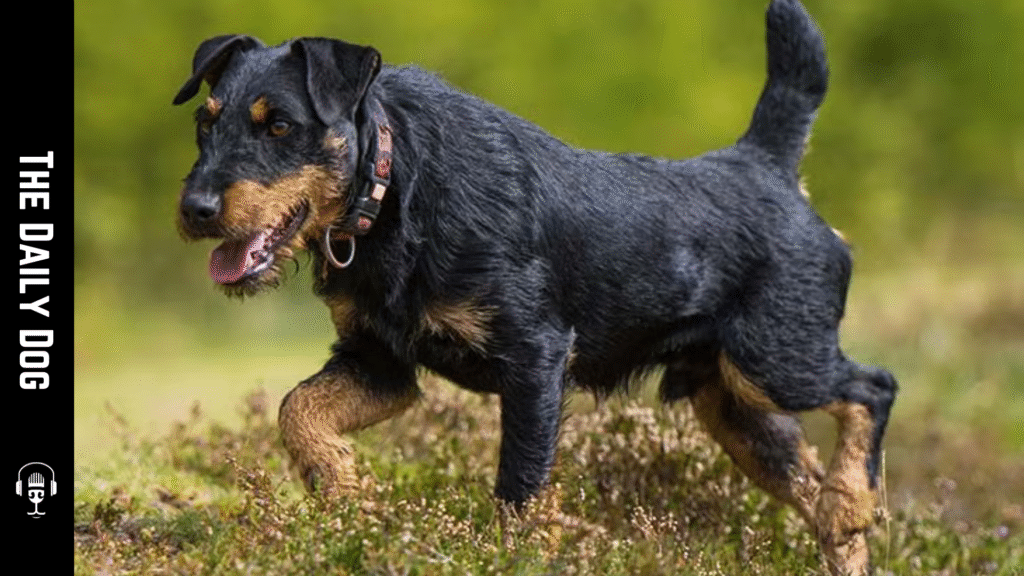The Jagdterrier, also known as the German Hunting Terrier, is a breed that embodies agility, intelligence, and tenacity. Initially bred for hunting purposes, this small but mighty dog has carved out a reputation as an energetic and fearless companion. Whether you’re a seasoned hunter or a dog enthusiast seeking a loyal and active pet, understanding the traits, history, and care needs of the Jagdterrier can help you appreciate this dynamic breed.
Origins and History of the Jagdterrier
The Jagdterrier’s roots trace back to early 20th-century Germany, where hunters sought a versatile dog capable of tracking, flushing, and retrieving game. To meet these needs, breeders crossed various terrier types with working German dogs, resulting in a breed that combined agility, hunting prowess, and intelligence.
The breed was officially recognized in the 1920s, and its reputation grew among hunters for its relentless drive and courage. Over the decades, the Jagdterrier has also gained popularity as a family pet, thanks to its loyalty, protective nature, and adaptability.
Physical Characteristics
The Jagdterrier is a compact, muscular dog with a robust build that reflects its active lifestyle. Here are some key physical features:
- Size: Typically stands between 13 and 16 inches at the shoulder.
- Weight: Ranges from 13 to 16 pounds, making it a small but sturdy dog.
- Coat: Short, dense, and wiry, protecting harsh terrains and weather.
- Color: Usually black and tan, with some variations including liver and tan.
- Eyes: Dark, expressive, and alert, reflecting its keen hunting instincts.
- Ears: Small, V-shaped, and set high on the head.
The breed’s appearance exudes agility and alertness, making it instantly recognizable among terrier breeds.
Temperament and Behavior
Jagdterriers are known for their energetic, bold, and intelligent nature. They possess a strong prey drive and are highly motivated by their desire to hunt and explore. These traits make them excellent working dogs, but also mean they require proper training and socialization from an early age.
Some key temperament traits include:
- Loyal and Protective: Jagdterriers form strong bonds with their owners and can be territorial, making them excellent watchdogs.
- Energetic and Playful: They thrive on activity and mental stimulation, requiring plenty of exercise and engagement.
- Intelligent and Quick Learners: Their sharp minds mean they pick up commands rapidly, but they can also be independent or stubborn.
- Brave and Fearless: No challenge is too daunting for this breed, whether in the field or at home.
While their spirited nature makes them excellent companions for active families or individuals, they may not be suitable for households with small children or other small pets unless properly socialized.
Training and Socialization
Training a Jagdterrier requires patience, consistency, and positive reinforcement techniques. Due to their intelligence and independence, they can sometimes be stubborn or assertive, so early socialization is crucial.
Tips for training include:
- Start Early: Introduce socialization and basic commands during puppyhood.
- Use Positive Reinforcement: Reward good behavior with treats, praise, or play.
- Be Consistent: Maintain a regular training routine to establish boundaries.
- Mental Stimulation: Incorporate puzzle toys and training exercises to keep their minds engaged.
- Exercise Needs: Ensure they get daily vigorous activities such as running, fetch, or agility training.
Because Jagdterriers have a strong prey drive, it’s essential to supervise them around small animals and to teach recall commands to prevent chasing or wandering.
Exercise and Activity Requirements
The Jagdterrier is an active breed that demands plenty of physical and mental stimulation. Without sufficient activity, they can become bored and may develop undesirable behaviors such as digging or excessive barking.
Ideal exercise routines include:
- Daily Walks: At least 30 to 60 minutes of brisk walking or running.
- Off-Leash Play: Secure outdoor spaces for free play and exploration.
- Agility and Obedience Training: Activities that challenge their intelligence and agility.
- Hunting or Tracking: For those with access, participating in hunting or scent-tracking sports can be exceptionally fulfilling.
Providing ample outlets for their energy ensures a well-behaved, happy dog and prevents behavioral issues stemming from boredom.
Grooming and Care
The Jagdterrier’s coat is low-maintenance but requires regular attention to stay healthy and looking its best.
Grooming tips include:
- Brushing: Weekly brushing to remove loose hairs and prevent matting.
- Bathing: Occasional baths, especially after outdoor activities, to keep their coat clean.
- Coat Trimming: Occasional trimming or hand-stripping to maintain the wiry coat’s condition.
- Ear Cleaning: Regular checks and cleaning to prevent infections.
- Nail Trimming: Routine trimming to avoid overgrowth and discomfort.
Dental hygiene should not be overlooked; regular brushing and dental check-ups contribute to overall health.
Health Considerations
Jagdterriers are generally a healthy breed, but like all dogs, they are prone to specific health issues:
- Hip Dysplasia: A genetic condition affecting the hip joints.
- Patellar Luxation: Dislocation of the kneecap.
- Allergies: Skin allergies or sensitivities to certain foods or environmental factors.
- Eye Conditions: Such as cataracts or progressive retinal atrophy.
Routine veterinary check-ups, a balanced diet, and regular exercise contribute to a long, healthy life, often spanning 12 to 15 years.
Living Environment and Suitability
The Jagdterrier adapts well to various living situations but thrives best in active households with space to run and play. They are not suited for apartment living unless their exercise needs are met with vigorous daily activities.
They are ideal for:
- Active Families: Those who enjoy outdoor adventures, hiking, or agility sports.
- Hunting Enthusiasts: Owners interested in scent work or field trials.
- Experienced Dog Owners: People familiar with training energetic and intelligent breeds.
Because of their strong prey drive and protective instincts, socialization and training are essential to ensure they behave appropriately around strangers and other animals.
The Right Owner for a Jagdterrier
Owning a Jagdterrier is a rewarding experience but requires commitment. They are best suited for owners who:
- They are physically active and enjoy outdoor pursuits.
- Have experience with energetic or intelligent breeds.
- Are willing to invest time in training and socialization.
- Appreciate a loyal, protective, and lively companion.
Their spirited nature makes them less suitable for first-time dog owners or households with very young children unless proper training and socialization are prioritized.
Conclusion
The Jagdterrier is a remarkable breed that combines hunting prowess, intelligence, and loyalty in a compact, energetic package. Whether as a working companion in the field or a lively pet at home, they excel when matched with owners who understand their needs and are prepared to provide the mental and physical stimulation they crave.
If you’re seeking a fearless, intelligent, and active dog that will keep you engaged and entertained, the Jagdterrier may be the perfect match. With proper training, socialization, and care, this breed can become a devoted and energetic member of your family, bringing excitement and loyalty into your life for many years to come.
If you have more questions about the Jagdterrier or are considering welcoming one into your home, consult with reputable breeders or rescue organizations to find a healthy, well-socialized puppy or adult dog.










